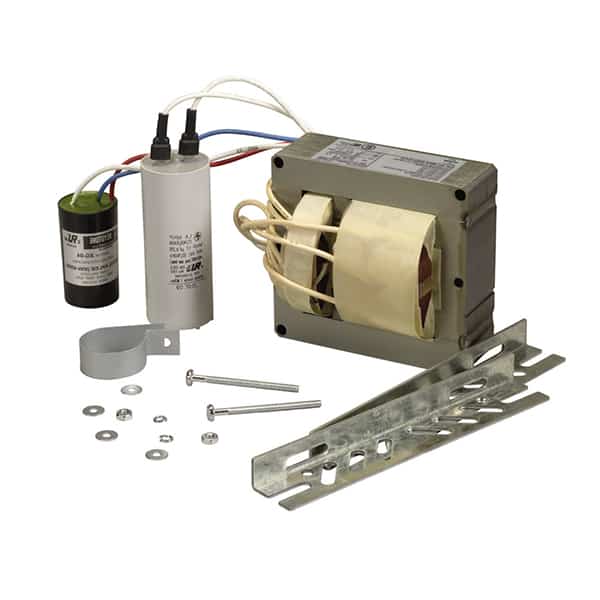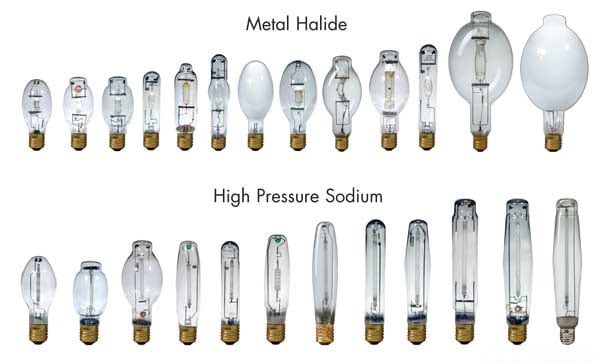A lot of lighting systems need a lamp ballast to work, but what a regular ballast does can be confusing. Let me explain what a regular ballast is and what it does.
A regular ballast is a device used in fluorescent and HID lighting systems to control the electricity going to the light bulb. It makes sure the light bulb starts and operates by giving it the right amount of voltage and current to keep the light output steady.
We’re going to talk about how these things work and why they are important for different kinds of lights.
What is a Conventional Ballast?
A conventional ballast, also known as a magnetic ballast, is a device used to regulate the voltage and current supplied to fluorescent and HID (High-Intensity Discharge) lamps. The ballast provides the necessary electrical conditions for starting and operating these types of lamps. Without a ballast, the lamp would draw too much current and burn out rapidly.
Conventional ballasts work by using electromagnetic coils to control the current flowing to the lamp. This process helps stabilize the lamp’s operation, preventing flickering or sudden surges of power.
Although conventional ballasts are one of the oldest types of ballasts, they are still widely used due to their durability and simplicity.
How Does a Conventional Ballast Work?
The core function of a conventional ballast is to control and limit the electrical current to the lamp. When a fluorescent or HID lamp is first turned on, a high voltage is required to create an electrical arc inside the lamp. Once the lamp is lit, the ballast reduces the voltage and regulates the current to ensure stable light output.
Conventional ballasts use a core and coil system, where electric current flows through the coils, generating a magnetic field. This magnetic field then controls the voltage and current to the lamp, ensuring smooth and steady operation. The ballast also helps to prevent overloading, which can damage the lamp or the lighting fixture.
Types of Conventional Ballasts
There are several types of conventional ballasts, each designed for specific applications:
- Preheat Ballast: This type of ballast requires a starter to heat the lamp’s electrodes before the electrical arc is established. Preheat ballasts are often found in older fluorescent lighting systems.
- Rapid Start Ballast: These ballasts preheat the lamp’s electrodes without the need for a separate starter. Rapid start ballasts are more energy-efficient and reduce the delay between turning on the lamp and full brightness.
- Instant Start Ballast: Instant start ballasts provide high voltage to start the lamp immediately without preheating the electrodes. These ballasts are typically used in fluorescent lamps that need to be turned on and off frequently.
Each type of conventional ballast has its own strengths and is suited for different lighting applications based on the specific needs of the environment.
Advantages of Conventional Ballasts
One of the main advantages of conventional ballasts is their reliability. They have been used for decades and are well-known for their long lifespan and sturdy design. This makes them a popular choice in industrial and commercial settings where durability is a priority.
Another advantage is their simplicity. Conventional ballasts have fewer components than newer electronic ballasts, making them easier to maintain and repair. Their straightforward design also allows for efficient operation in environments with stable electrical conditions.
Disadvantages and Challenges of Conventional Ballasts
Despite their reliability, conventional ballasts do have some drawbacks. One of the most significant disadvantages is energy inefficiency. Compared to modern electronic ballasts, conventional ballasts consume more energy and generate more heat. This can lead to higher operational costs and the need for additional cooling in some installations.
Additionally, conventional ballasts are prone to producing a humming noise and flickering lights, especially as they age. This can be disruptive in environments where smooth, quiet operation is essential, such as offices or schools.
Applications of Conventional Ballasts
Conventional ballasts are used in a variety of lighting applications, particularly in industrial, commercial, and outdoor environments. Some common applications include:
- Fluorescent Lighting in Warehouses and Factories: Conventional ballasts are often found in large facilities where durability and reliable lighting are crucial for productivity.
- HID Lighting in Stadiums and Street Lights: Many outdoor lighting systems, including stadium lights and street lamps, use HID lamps paired with conventional ballasts to provide powerful, consistent illumination.
- Older Commercial and Residential Buildings: Conventional ballasts are still commonly used in older buildings where upgrading to newer electronic systems may not be feasible.
Conclusion:
Conventional ballasts are a good, rugged way to light things up, especially in industrial and outdoor applications. However, they are not as energy-efficient as modern electronic ballasts.



